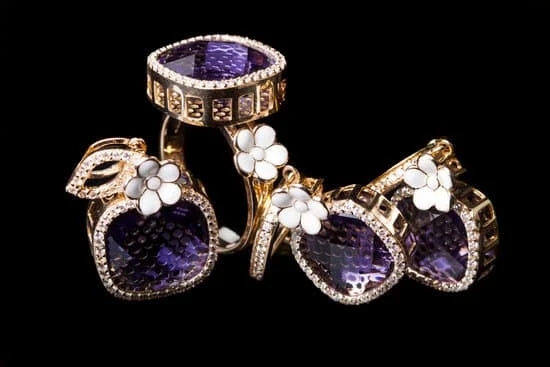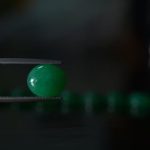Are you interested in learning how to use crimp beads in jewelry making? Crimp beads are essential components for securing and finishing off beaded jewelry pieces, and mastering their use can greatly enhance the quality of your designs. In this article, we will provide a beginner’s guide to understanding crimp beads and how to effectively incorporate them into your jewelry projects.
Before diving into the step-by-step process of using crimp beads, it is important to first gain a clear understanding of what crimp beads are and their function in jewelry making. This section will cover the basics of crimp beads, including their purpose, different types available, and the advantages they offer for creating professional-looking finishes in your designs.
We will also explore the various factors to consider when choosing the right crimp beads for your specific jewelry project. This includes understanding different sizes, shapes, and materials of crimp beads, as well as how to select the best option for ensuring durability and aesthetic appeal in your finished piece.
Choosing the Right Crimp Beads for Your Jewelry Project
When it comes to choosing the right crimp beads for your jewelry project, there are a few key factors to consider. The first thing to keep in mind is the size of your beading wire. Crimp beads come in different sizes, so it’s important to select one that will accommodate the diameter of your wire. Using a crimp bead that is too small for your wire may result in a weak connection that is prone to breaking.
Another important consideration when choosing crimp beads is the material they are made from. Most crimp beads are available in either sterling silver, gold-filled, or plated finishes. It’s important to choose a material that matches the overall look and feel of your jewelry design. Additionally, consider the color of the crimp beads and how they will complement the rest of your project.
Lastly, think about the type of jewelry you are creating and how much movement it will have. For designs with more flexibility and movement, larger or tube-shaped crimp beads may be more appropriate as they allow for more freedom of movement. On the other hand, for projects with less movement, smaller crimp beads may work just fine.
To summarize, here are some key points to remember when choosing the right crimp beads for your jewelry project:
- Consider the size of your beading wire
- Choose a material that complements your design
- Think about the flexibility and movement of your jewelry design
Tools and Supplies Needed for Working With Crimp Beads
Crimp beads are an essential component in jewelry making, especially when it comes to securing clasps and creating a clean, professional finish. In order to use crimp beads effectively, there are certain tools and supplies that you will need to have on hand.
One of the most important tools for working with crimp beads is a pair of crimping pliers. These specialized pliers have two notches that are used to secure the crimp bead in place. It’s important to use crimping pliers specifically designed for jewelry making, as they provide the right amount of pressure without damaging the bead.
In addition to crimping pliers, you will also need beading wire or thread, as well as your chosen clasps and beads. It’s important to choose beading wire or thread that is sturdy enough to hold the weight of your design but still flexible enough to manipulate into your desired shape.
Finally, having a pair of flush cutters on hand is essential for trimming excess wire or thread once your crimp bead is secured. Now that we’ve covered the tools and supplies needed for working with crimp beads, let’s move on to the step-by-step guide on how to use them in your jewelry making projects.
| Tools and Supplies | Needed for Working With Crimp Beads |
|---|---|
| Crimping Pliers | Beaded Wire or Thread |
| Clasps and Beads | Flush Cutters |
Step-by-Step Guide to Using Crimp Beads in Jewelry Making
Preparing Your Materials
Before starting your jewelry making project with crimp beads, it’s important to gather all the necessary materials and tools. This includes your choice of beads, beading wire, crimp beads, crimp covers, and a pair of chain-nose pliers. Ensure that you have a clean and organized workspace to prevent any loss of materials or frustration during the process.
Stringing Your Beads
Once you have all your materials ready, begin stringing your beads onto the beading wire in the desired pattern or design. Be sure to leave some extra wire at the end to give yourself space for working with the crimp beads. Once your beads are strung onto the wire, thread one end of the wire through a crimp bead and then through one half of the clasp before looping it back through the crimp bead.
Securing and Finishing
Use your chain-nose pliers to gently press down on the crimp bead until it is flattened securely onto the wire. Trim off any excess wire carefully, leaving just enough for flexibility but ensuring that no sharp ends are left exposed.
To create a professional finish, cover the flattened crimp bead with a crimp cover using your pliers to gently close it around the bead. This will give your jewelry a polished look while also ensuring that there are no rough edges that could snag on clothing or skin.
By following these simple steps, you can effectively use crimp beads in jewelry making to create stunning pieces that are both secure and aesthetically pleasing. Remember practice makes perfect when working with delicate materials like crimp beads, so don’t be afraid to experiment and refine your technique as you become more comfortable with their use.
Common Mistakes to Avoid When Using Crimp Beads
When it comes to using crimp beads in jewelry making, there are some common mistakes that beginners often make. These mistakes can lead to unsightly or insecure jewelry pieces. By being aware of these potential pitfalls, you can ensure that your crimp bead jewelry projects turn out beautifully and securely.
Here are some common mistakes to avoid when using crimp beads in jewelry making:
1. Over-crimping: One of the most common mistakes is over-crimping the bead, which can cause it to break or weaken the overall structure of the jewelry piece. To avoid this, gently squeeze the crimp bead just enough to secure the wire in place without flattening it completely.
2. Using the wrong size: It’s essential to use the right size crimp bead for your project. If the crimp bead is too big, it won’t secure the wire properly, and if it’s too small, it may not hold enough tension. Always choose a crimp bead that is appropriate for the diameter of your beading wire.
3. Not finishing with a crimp cover: For a polished and professional look, always finish off your crimped jewelry pieces with a crimp cover. This small metal finding hides the crimp bead and gives your piece a clean and finished appearance.
By being mindful of these common mistakes, you can create beautiful and secure jewelry pieces using crimp beads.
By diligently avoiding these common errors, you will be on your way to creating stunning and durable jewelry pieces using this essential technique in jewelry making.
Tips and Tricks for Achieving Professional-Looking Finishes
When it comes to using crimp beads in jewelry making, achieving a professional-looking finish is essential for creating high-quality pieces. One key tip for achieving this is to invest in the right tools and supplies. Quality tools such as crimping pliers and bead stoppers can make a significant difference in the final result of your jewelry.
Another important aspect to consider is the technique used when securing the crimp beads. It’s crucial to ensure that the crimp bead is flattened evenly and securely, so that it holds the jewelry piece together without any risk of coming apart. Taking your time and practicing this technique will greatly improve the overall look and durability of your jewelry.
In addition to using the right tools and perfecting your technique, paying attention to detail is also vital for achieving professional-looking finishes with crimp beads. This includes making sure that there are no loose wires or threads visible, and that all components of the jewelry piece are neatly arranged and secured. Attention to detail will elevate the overall appearance of your creations.
Finally, one trick for achieving professional-looking finishes with crimp beads is to incorporate them into unique and creative designs. By experimenting with different patterns, color combinations, and styles, you can create jewelry pieces that stand out while still looking polished and professionally crafted.
| Tip | Description |
|---|---|
| Invest in quality tools | Quality tools such as crimping pliers can make a significant difference in achieving professional-looking finishes. |
| Perfect your technique | Take your time to practice flattening and securing crimp beads evenly for a polished appearance. |
| Paying attention to detail | Ensure that all components are neatly arranged with no loose wires or threads visible. |
Creative Ways to Incorporate Crimp Beads Into Your Jewelry Designs
Adding Texture and Dimension
One creative way to incorporate crimp beads into your jewelry designs is by using them to add texture and dimension. You can create unique patterns and designs by strategically placing crimp beads throughout your piece.
For example, you can alternate between stringing beads directly on the wire or cord and adding crimp beads in between for a more interesting and dynamic look. This technique can work especially well with multi-strand necklaces or bracelets, allowing you to create a one-of-a-kind piece that stands out.
Creating Floating Bead Designs
Another creative use for crimp beads is to create floating bead designs. By using crimp beads to secure individual beads at intervals along the length of your stringing material, you can achieve a “floating” effect where the beads appear to be suspended in place.
This technique works particularly well with transparent or semi-transparent beads, as it gives the illusion that they are magically suspended in mid-air. This can add an ethereal and whimsical touch to your jewelry designs, making them truly unique and eye-catching.
Incorporating Crimp Cover Beads
Crimp cover beads are a great way to hide unsightly crimp beads while adding an elegant touch to your jewelry designs. These small metal beads are designed to fit over crimp beads, giving them a polished and professional appearance.
By incorporating crimp cover beads into your designs, you can elevate the look of your jewelry pieces and give them a more finished appearance. Additionally, crimp cover beads come in a variety of shapes and finishes, allowing you to further customize your designs and create truly stunning pieces of jewelry.
By incorporating these creative techniques into your jewelry designs, you can make use of crimp beads in innovative ways that set your creations apart from the rest. Whether it’s adding texture and dimension, creating floating bead designs, or using crimp cover beads for a polished finish, there are endless possibilities for incorporating crimp beads into your jewelry projects.
Troubleshooting
When working with crimp beads in jewelry making, it’s not uncommon to encounter mistakes and mishaps along the way. Whether it’s a crimp bead that didn’t hold properly or a crimp tube that got squished too much, these issues can be frustrating for beginners and experienced jewelry makers alike. However, knowing how to troubleshoot and fix these mistakes can save your jewelry project from being ruined.
One common issue when using crimp beads is that they may not hold the wire securely in place, leading to a weak connection in your jewelry piece. To fix this, you can use a pair of chain-nose or flat-nose pliers to gently squeeze the crimp bead again, ensuring that it grips the wire firmly without breaking it. Additionally, using a crimping tool specifically designed for crimp beads can help create a more secure and professional-looking finish.
Another problem that may occur when working with crimp beads is accidentally cutting the wire too short or leaving it too long after crimping. If this happens, you can carefully remove the flattened crimp bead from the wire using pliers and start over with a new crimp bead. It’s important to measure and cut the wire accurately before inserting it into the crimp bead to avoid this issue in the future.
Additionally, if you find that your crimp beads are leaving sharp edges on your jewelry piece or causing discomfort when worn, you can use a pair of needle-nose pliers to gently fold over any protruding edges of the flattened crimp bead. This will ensure that your finished jewelry piece is not only secure but also comfortable to wear.
By understanding how to troubleshoot and fix common mistakes when using crimp beads in jewelry making, you can confidently tackle any issues that arise during your projects. With practice and patience, you’ll be able to create beautiful and professionally finished jewelry pieces using crimp beads.
Advantages and Disadvantages of Using Crimp Beads in Jewelry Making
Crimp beads are essential components in jewelry making, providing a secure and professional finish to your designs. However, it is important to consider the advantages and disadvantages of using crimp beads before incorporating them into your projects.
One of the main advantages of using crimp beads is their versatility. Crimp beads can be used with different types of beading wires, such as tiger tail, nylon coated wire, or stainless steel wire. This makes them suitable for a wide range of jewelry designs, from delicate bracelets to heavy-duty necklaces. Additionally, crimp beads come in various sizes and materials, allowing you to choose the most suitable option for your specific project.
Another advantage of using crimp beads is their ease of use. Once you have mastered the technique, using crimp beads can significantly speed up the jewelry-making process. With just a few simple steps and the right tools, you can create professional-looking finishes that will securely hold your jewelry pieces together.
However, there are also some disadvantages to using crimp beads. One common issue that jewelers encounter is accidentally damaging the beading wire while crimping the bead. This can weaken the structure of the jewelry piece and lead to breakage over time.
Additionally, some individuals find it challenging to achieve a neat and polished finish with crimp beads, especially when working with thinner wires or intricate designs. Despite these challenges, mastering the art of using crimp beads can greatly enhance your jewelry-making skills and allow you to create stunning pieces with confidence.
Conclusion
In conclusion, learning how to use crimp beads in jewelry making can open up endless possibilities for your designs. By understanding the different types of crimp beads and the tools needed, you can confidently create professional-looking finishes for your jewelry pieces. Choosing the right crimp beads for your project is essential, and taking the time to familiarize yourself with the step-by-step process will help you avoid common mistakes.
While working with crimp beads may present some challenges, such as fixing mistakes and mishaps, knowing effective troubleshooting techniques can save you time and frustration. Additionally, incorporating creative ways to utilize crimp beads in your designs can add unique touches to your jewelry pieces.
Ultimately, mastering the art of using crimp beads in jewelry making comes with practice and patience. With dedication and attention to detail, you can take advantage of the many benefits that crimp beads offer for securing clasps and creating professional finishes in your jewelry projects. So go ahead, experiment with different techniques and designs to discover how using crimp beads can elevate your jewelry-making skills to new levels of creativity and craftsmanship.
Frequently Asked Questions
Do You Need a Special Tool for Crimp Beads?
A special tool called crimping pliers is commonly used for securing crimp beads in beading projects. These pliers have notches that help create a secure and professional-looking crimp.
How Do You Use Crimps in Beading?
To use crimps in beading, start by sliding a crimp bead onto the beading wire after adding your beads. Then, pass the wire back through the crimp bead to create a loop. Use crimping pliers to secure the crimp in place.
Why Won T My Crimp Beads Hold?
There are several reasons why your crimp beads may not hold. It could be due to using the wrong size of crimp bead for your wire, not properly flattening the crimp with pliers, or using low-quality or old crimps that have lost their ability to hold.

Welcome to my jewelry blog! My name is Sarah and I am the owner of this blog.
I love making jewelry and sharing my creations with others.
So whether you’re someone who loves wearing jewelry yourself or simply enjoys learning about it, be sure to check out my blog for insightful posts on everything related to this exciting topic!





